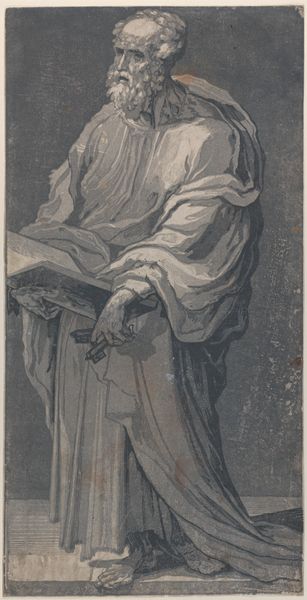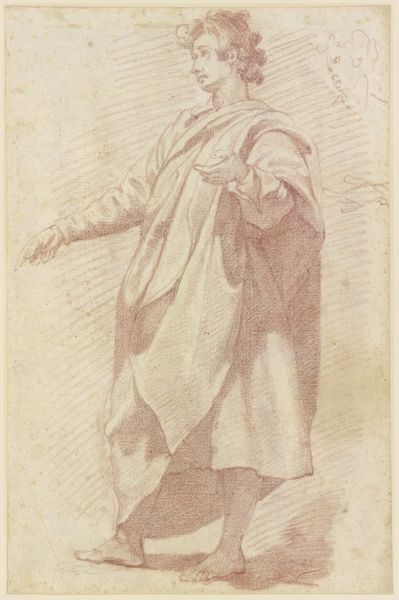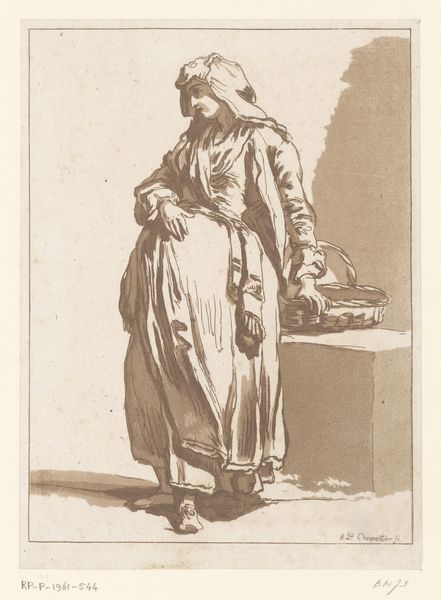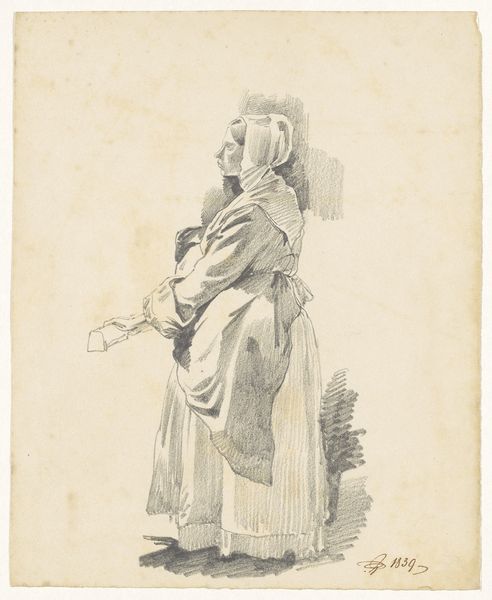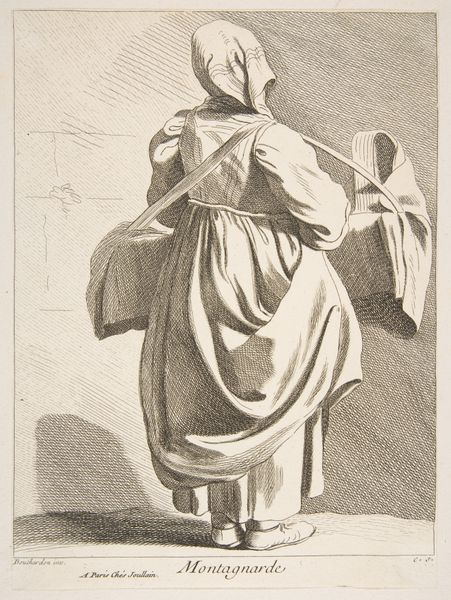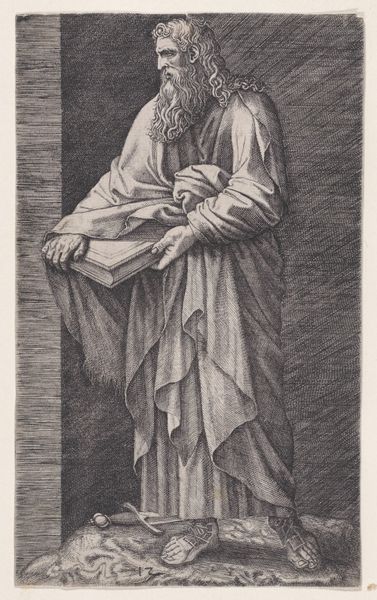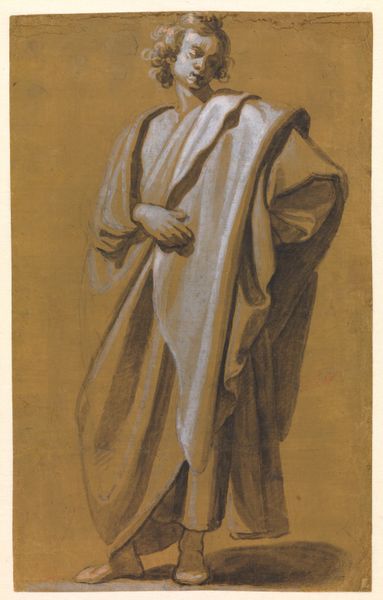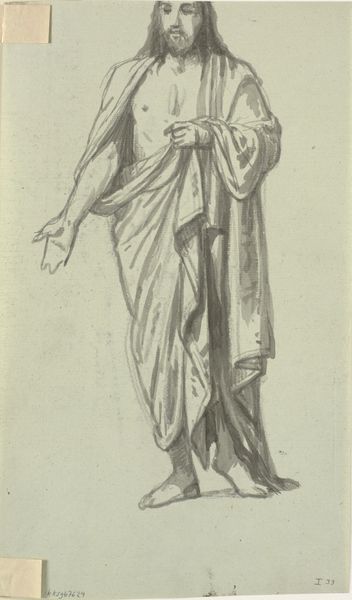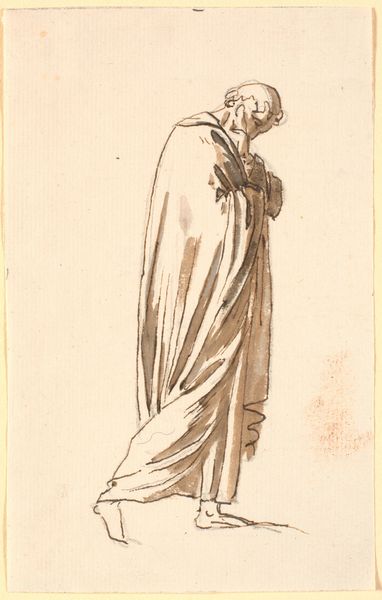
drawing, print, paper, ink, pencil, chalk, graphite
#
portrait
#
drawing
# print
#
caricature
#
paper
#
ink
#
romanticism
#
pencil
#
chalk
#
graphite
#
genre-painting
Dimensions: 123 × 83 mm
Copyright: Public Domain
Curator: This is James Ward's "Woman Near Stove," a print dating back to 1819, now residing here at The Art Institute of Chicago. Editor: My first impression is its understated beauty. It's primarily rendered in grey ink, graphite, and chalk—muted tones that give the scene a somewhat melancholic feel. Curator: The materials contribute directly to its meaning. The work seems humble; graphite, chalk and ink, cheap and common. The artist is making the tools of labour and record accessible by mirroring this same commonality through artistic means. Editor: That makes sense when considering Ward's artistic trajectory. Remember how deeply Romanticism, a response to rapid industrialization, seeped into visual culture? It idealized simple domestic life, a space outside of capitalist society. Curator: Right. I also notice the layered processes involved in producing the print; chalk sketches were initially drafted, and subsequently finished using pencils, graphite, and ink before printing copies. It's about capturing labor through various forms of material inscription and re-inscription. Editor: And the location plays a critical role in our understanding of this piece. Putting such works on display contributes to canon formation, essentially designating domestic imagery worthy of museum space. In effect, what was deemed “everyday” is then rendered historical. Curator: That is a valid point about value, yes. I find Ward's artistic method interesting here as well, seeing that many sketches of his other works are preparatory images of commissions from wealthy patrons to demonstrate an intended final product, which are then later sold as original works on their own merit to make art more affordable. It brings a sense of art for all. Editor: Fascinating, really. "Woman Near Stove" then reflects broader anxieties regarding socio-economic shifts, framed by gender roles within a domestic setting; Ward doesn't simply record a moment, he stages it within an expanding consumer culture and developing markets. Curator: Precisely. By engaging with materials and artistic labor, this artwork complicates simple notions of observation or record. The labour is in the doing. Editor: An everyday image with lasting resonance due to the convergence of industrial shifts and Ward's response in an affordable work, making it historically compelling. Curator: Indeed. Thank you. It helps to look at "Woman Near Stove" with your insight in mind, really, so it is a true pleasure to visit it again with you.
Comments
No comments
Be the first to comment and join the conversation on the ultimate creative platform.
